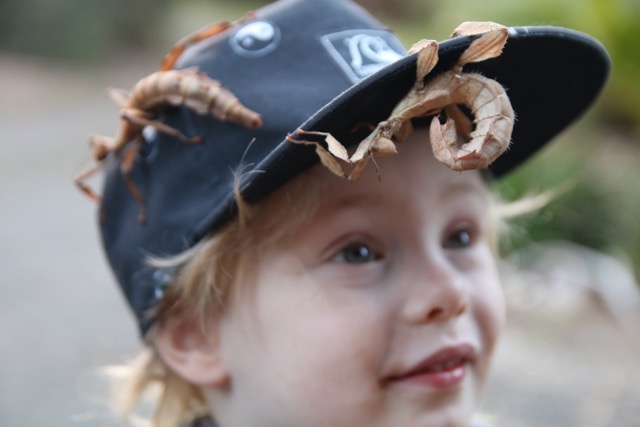Creepy crawlies – some people love them, others find them downright terrifying.
They include creatures called arthropods which are insects, arachnids (did someone say spider?), myriapods and molluscs.
The phrase ‘creepy crawlies’ actually means creatures that give someone a feeling of fear or disgust.
But there’s no reason to be frightened.
I love creepy crawlies – in fact I have many that live at my home.
Part of my job is presenting invertebrates to kids through WildlifeXposure’s Creepy Crawlies program.
Our creepy crawlies presentations include spiders, scorpions, giant panda snails, giant millipedes, giant centipedes and giant burrowing cockroaches.
I do these presentations at schools, kindergartens and children’s birthday parties.
Here are some weird and wonderful facts about creepy crawlies which I talk about during my presentations:
– Insects have compound eyes, made up of many of tiny eyes
– Arthropods such as insects and spiders can regrow their legs if they loose them
– Centipedes breath through small holes on the sides of their bodies called spiracles
– Arthropods make up the bulk of living things on earth, there are more of them than all other animals combined
– Snails have a rough tongue called a radula for grinding up their food
– Some insects reproduce by cloning themselves
– All arthropods shed their exoskeletons as they grow. Although many of the creatures can’t be touched, kids can learn a lot just by looking at them. I also share some weird facts about creepy crawlies, such as these:
In our creepy crawlies program you will discover they are small but in a massive way!. Watch this space!
*Xavier Morello operates Wildlife Xposure with wife Madeleine. The Surf Coast family business offers programs ideal for schools, kindergartens and childcare facilities across Victoria. They also offer wildlife birthday parties and large displays and stage presentations for festivals, shopping centres and corporate events.
For more information, visit www.wildlifexposure.com.au








